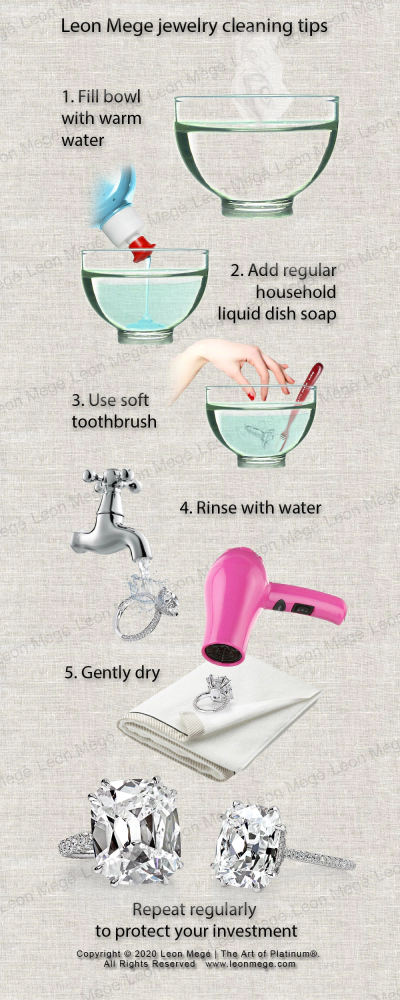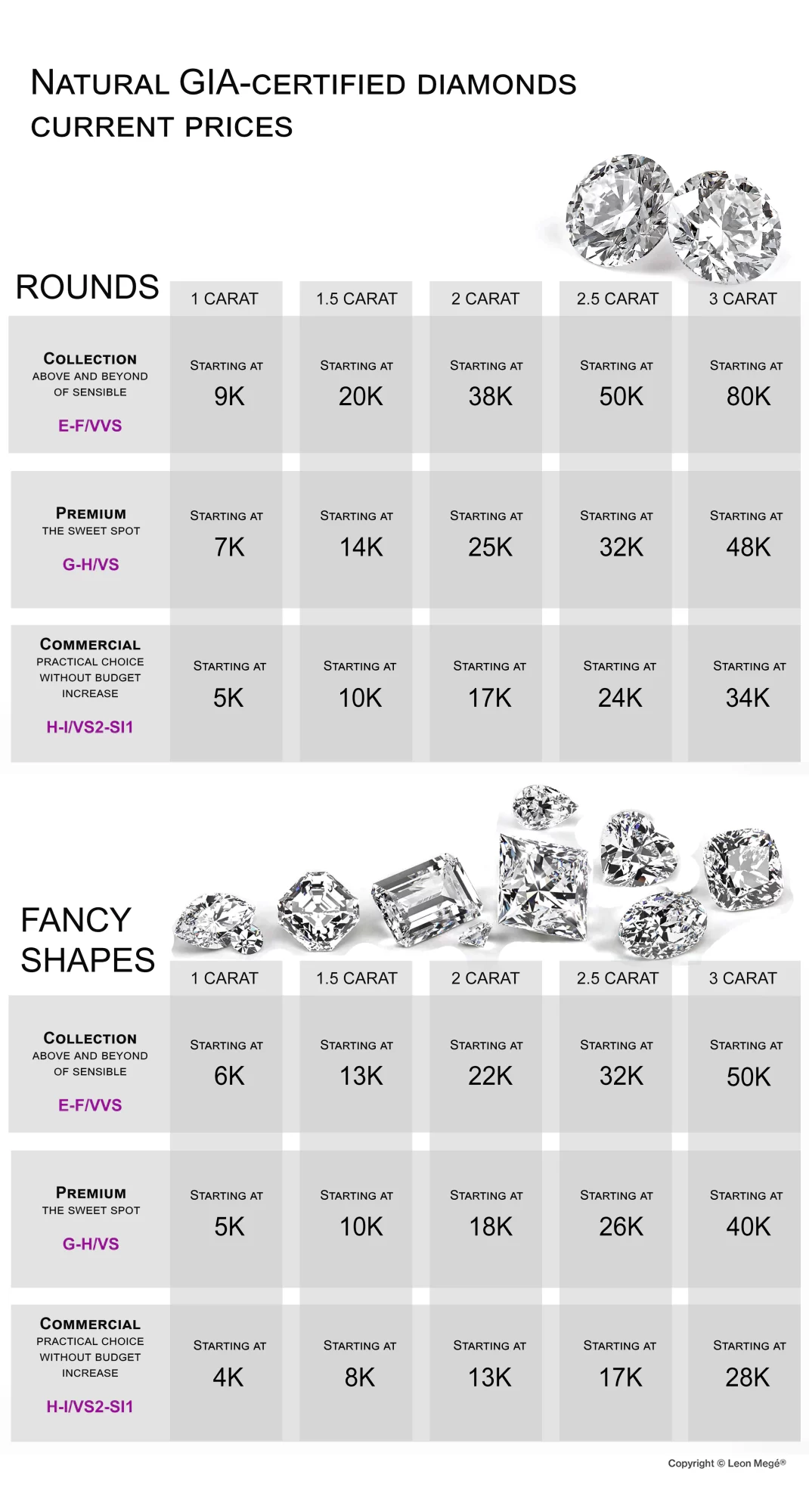“Elegance is not dependent on money. The most important of all is care. Care in choosing your clothes. Care in wearing them. Care in keeping them.” Christian Dior
- Cleaning
- Avoiding damage
The very day you slide a piece of jewelry on your finger, it starts to accumulate some damage. How long a ring is going to last is literally in your hands. Protect your jewels by keeping them clean.
Store jewelry pieces separately in individual pouches to protect them from scratches and chips.
Do not wear jewelry while exercising, swimming, gardening, mechanical bull riding, white-knuckle driving, or other activity involving heavy use of hands.
Minimize exposure to oils, lotions, and cosmetics by applying makeup before putting the jewelry on.
Protect jewelry from extreme temperatures.
Avoid exposure to harsh chemicals, abrasives, nail polish removers, perfumes, or hairspray.
Any gemstone, including a diamond, can chip if hit hard at certain angles. Emeralds, opals, and other stones, such as feldspar (moonstones), are particularly delicate and easily damaged. Keep opals away from direct sunlight. They will dry out and crack.
The basics of cleaning jewelry
Bring your jewelry for an inspection at least once a year to ensure it stays radiant and sparkling. Professional jewelers use ultrasound and steam to clean the jewelry and will check for loose stones after cleaning.
Diamonds have a curious property called lipophilia (attraction to grease) that causes the oily film to spread over the entire diamond surface immediately after it touches the skin. The film traps the dust particles forming a dirt layer that regular cleaning can easily remove.
Diamonds appear one or two color grades lower when dirty, with up to 20% loss of value. Without proper upkeep, they look repulsive instead of dazzling and mystifying.
Best cleaning method – using a soft toothbrush
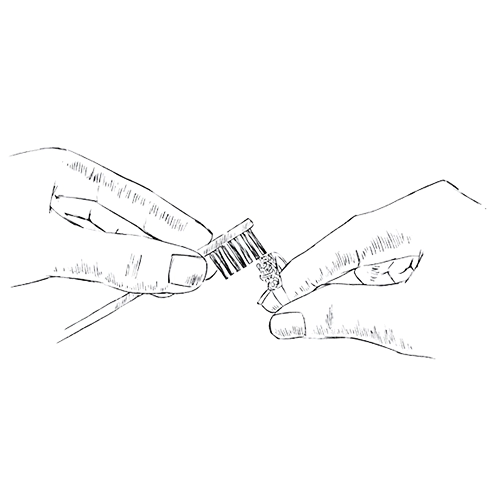
Dissolve a few drops of dishwashing liquid (any brand) in a cup of warm water. Optionally add a few drops of regular household ammonia.
Gently brush jewelry using a soft toothbrush. Try to dislodge the dirt accumulated directly under the stones. Rinse with lukewarm water. Pat with a paper towel or use a hairdryer to dry. Pressurized air can be used for drying water remains. However, canned air cannot remove the greasy film, which is unsuitable for cleaning jewelry.
Regular cleaning prevents the greasy build-up from accumulating under the stone. Once the organic deposits from makeup, lotions, and perspiration are calcified and hardened, removing them becomes a challenge, even for the professional-grade equipment.
Soaking
Routine cleaning (approximately twice a month) will bring the best results. An irregular cleaning, on the other hand, promotes dirt build-up. Soaking your diamond jewelry overnight in water will soften the calcified deposits and make cleaning a breeze.
Stones other than emeralds and pearls are safe to soak overnight. Emeralds are often impregnated with oil. Soaking will remove the oil so that the stone will lose its transparency. Immersing pearls in a water-based solution can disintegrate the knots and strings. Merely wiping the pearls with a soft cloth will do the trick.
Ultrasonic cleaner

A consumer-grade ultrasonic cleaner is suitable only for special occasions. Using it regularly is not recommended because ultrasound can loosen or even dislodge small stones from the setting. Yet, it is not powerful enough to dissolve the hardened deposits, and grime stuck under the stones.
Two pieces should not be cleaned simultaneously – they will scratch each other. Pieces with flexible joints, such as bracelets, necklaces, or earrings with hinged parts, must be restrained to ensure that separate parts do not touch.
Emeralds, opals, rare gemstones, heavily included, cracked, and fracture-filled stones should not be cleaned in ultrasonic. The internal integrity of a gemstone is a crucial element in deciding to subject the stone to ultrasound.
Professional-grade ultrasonic has enough power to eradicate dirt. However, it is the jeweler’s responsibility to check every stone after the cleaning.
Steam cleaning
An industrial-strength steamer is a standard piece of equipment in every jewelry store or shop. Steamers use water and electric heat to generate pressurized steam.
Industrial steamers are practical and too dangerous for use at home. They are expensive, bulky, and require regular maintenance. Because of their low pressure, consumer-grade steamers are mostly used for drying jewelry after washing.
Most gemstones can tolerate high heat from the steam but will crack from a sudden temperature change. Don’t put freshly steamed jewelry on a cold surface until it cools off.

Ionic Cleaner
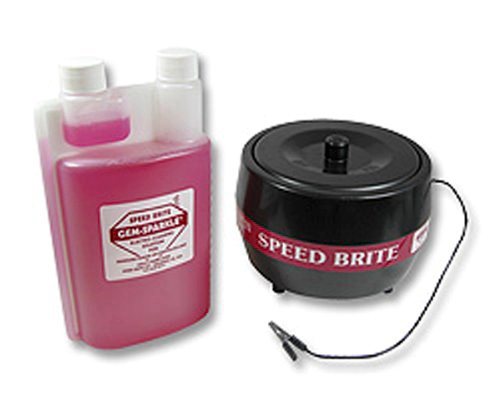
The ionic cleaner is not well suited to clean platinum and diamond jewelry. However, it is useful for removing tarnish from delicate jewelry with pearls and soft stones such as emeralds and turquoise. It runs a mild charge through a piece of jewelry immersed in a liquid cleaner. The process is very similar to electroplating, but the electric current flows in the opposite direction.
Modern engagement rings, often covered with hundreds of pave diamonds, have a lower threshold for damage from occasional dings and bumps. There are many ways the rings get damaged during wear. We cannot be sure what causes the damage, but we zeroed down on a few culprits. In jewelry, the damage is anything that interferes with the design aesthetics and appearance of the stones, not necessarily breaks or cracks. Even excess dirt solidified on a stone’s surface (usually its pavilion) that cannot be removed by ultrasonic and steam is permanent damage.
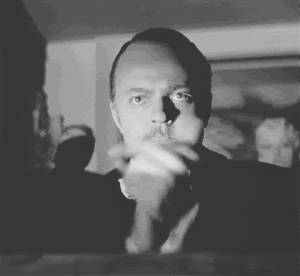
Clapping
It is hard to believe, but clapping is often the cause of irreparable damage. When people applaud vigorously, the rings on the opposite hands hit each other up to four times per second, it is still less than 14 times per second Kent French, the world’s fastest clapper, does. Still, even at a lower rate, hundreds of supersonic booms created by each collision can cause the ring to collapse.
Bending
Rings with pave are more resilient because diamonds layered with metal form a composite material. Unfortunately, rings get out of shape with age, causing some diamonds to separate and fall out. The cause of the ring bending typically comes from repeated knocks at the shank base against hard surfaces, usually tabletops.
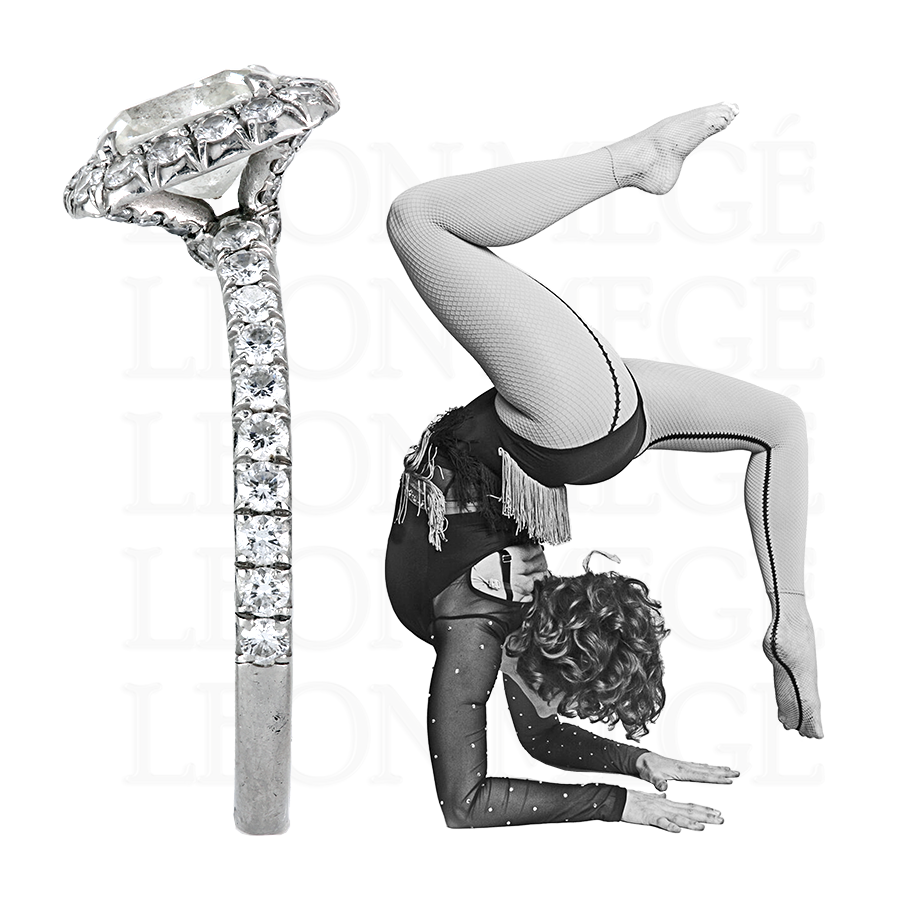

Unnecessary roughness
Rough wear is the most common cause of ring damage. Even a heavy ring with thick metal can be gradually destroyed by wearing it while doing house chores. Excessive pressure on a ring while driving, doing physical exercises, or bull riding will damage your ring. These activities create friction, especially when the diamonds are pressed against each other. This damage can suddenly occur or build-up, eventually manifesting in lost diamonds or severe cracks.
Friction between adjacent rings
The most common form of damage comes from two rings rubbing against each other. Friction will cause damage to metal and stones that are in direct contact. This is especially devastating when diamonds grind against other diamonds. Following these tips helps prevent damaging friction between adjacent diamond rings and keep your jewelry looking its best:
- Wear the rings on different fingers. This will eliminate the problem.
- Use a ring spacer – a washer-like thin band worn between two rings. The spacer will work as a buffer protecting the rings from each other.
- Avoid wearing your rings while doing activities that could cause them to crush each other, such as exercising, gardening, or having marital arguments.
- Always store your rings separately, each in a separate box or case.
- Have a professional jeweler regularly clean and inspect your rings and look for signs of damage, such as abrasion or chips.
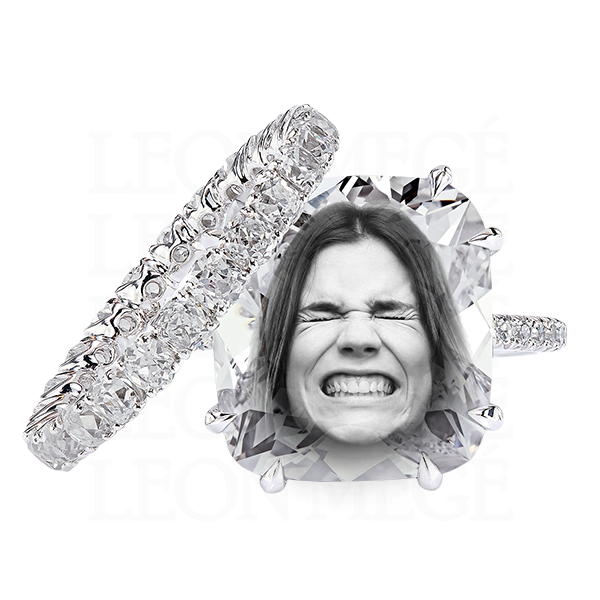
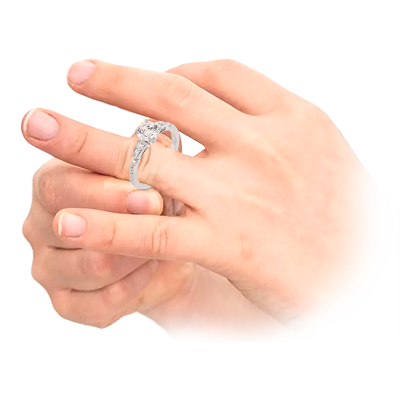
Wrong sizing
A ring that is too big is prone to bending. Proper ring sizing is very important and should be done by a professional. When a ring is incorrectly sized, it bends or stretches. This can weaken the ring and make it more likely to break. In addition, if the ring is set with pave, it is more likely to lose some stones.

